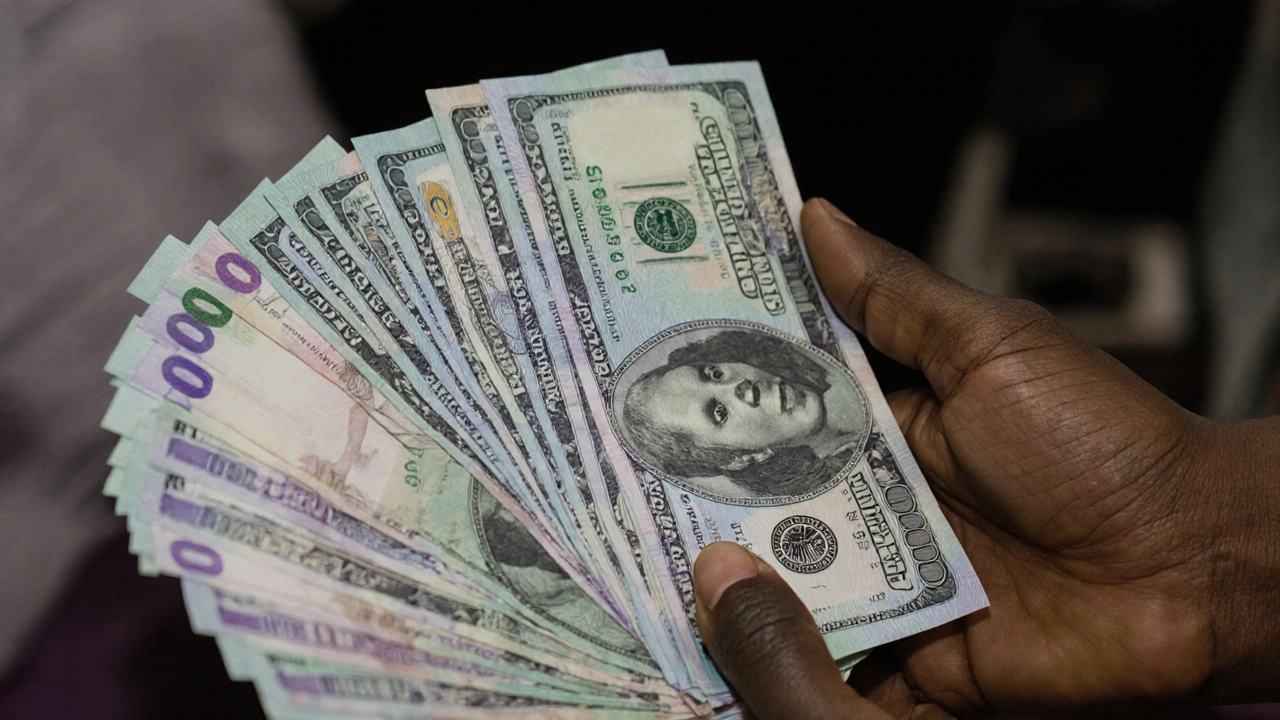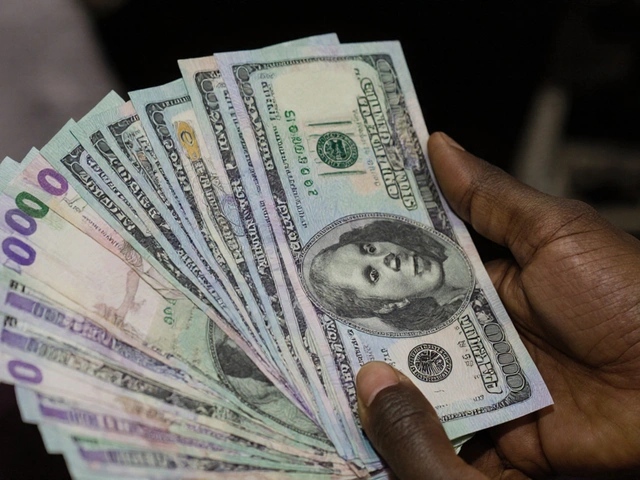Currency rally follows policy shift
On Tuesday the Naira pushed past a key resistance level, trading at N1,487.37 per US dollar in the official market. That marks a modest but clear improvement over Monday’s N1,488.60 rate, according to figures released by the Central Bank of Nigeria (CBN). The move was not limited to the government‑run window – parallel market dealers reported similar strength, suggesting the policy shift resonated across the whole FX landscape.
The backdrop to this rally was the CBN’s recent decision to lower its benchmark interest rate. By trimming the policy rate, the central bank signalled a willingness to ease monetary tightening while still guarding against inflation. Market participants interpreted the cut as a cue that the authority is actively managing liquidity and is confident enough to let the Naira breathe.
Why the Naira is holding up
Several factors helped the currency’s bounce. First, the rate cut reduced the cost of borrowing for banks, which in turn lowered the demand for foreign dollars used to fund short‑term loans. Second, the CBN’s continued intervention in the forex market – buying dollars and selling Naira at strategic levels – has created a floor that supports the local unit. Third, investor sentiment appears to be shifting. Traders who were previously wary of holding Naira‑denominated assets now see a modest upside, prompting them to increase exposure.
Analysts also point to the broader macro‑economic context. Nigeria’s oil revenues have been stabilising after a turbulent period, providing a steadier flow of foreign exchange. At the same time, the government’s efforts to diversify the economy have started to bear fruit, with non‑oil exports picking up modestly. These developments, combined with the central bank’s policy tweak, are feeding a narrative of gradual stabilization.
Data from the CBN’s daily market bulletin shows that demand for the Naira remained robust throughout the trading day. Both importers and exporters reported smoother settlement processes, and the spread between the official and parallel rates narrowed slightly. While the numbers are still far from pre‑crisis levels, the narrowing gap is a positive sign for market confidence.
Looking ahead, market watchers are keeping a close eye on the CBN’s next moves. If the central bank continues to use a balanced mix of interest‑rate policy and targeted forex interventions, the Naira could see further incremental gains. However, any resurgence of inflationary pressure or a sharp drop in oil prices could reverse the hard‑won progress.
For now, the modest appreciation offers a breather for Nigerians who rely on imported goods, as a stronger local currency helps curb the cost of foreign‑priced items. It also provides a small but tangible boost to the purchasing power of households and businesses alike.



Comments
Naira finally got a break.
Glad to see some relief; a stronger Naira could ease everyday costs 😊
The recent policy rate cut by the CBN is a rare moment of monetary optimism in a climate that has been dominated by tightening. By lowering the benchmark, the central bank signals that it believes inflationary pressures are receding enough to risk a modest easing. This move also reduces the cost of borrowing for commercial banks, which in turn eases the demand for foreign currency to finance short‑term credit. Consequently, the pressure on the Naira from dollar‑hungry lenders diminishes, allowing the local unit to inch upward. Moreover, the CBN’s ongoing interventions-purchasing dollars and supplying Naira at strategic levels-act as a price floor that prevents abrupt devaluation. Investors have taken note, shifting some of their portfolio weight back into Naira‑denominated assets, a subtle but important sentiment shift. The oil sector, long the backbone of Nigeria’s foreign exchange earnings, has shown signs of stabilization, providing a steadier stream of dollars into the market. In parallel, diversification efforts are beginning to bear fruit, with non‑oil exports modestly increasing, adding another layer of resilience. All these factors converge to create a narrative of gradual stabilization rather than a short‑term rally. Nonetheless, the gap between the official and parallel market rates, though narrowing, remains a reminder of underlying market frictions. Should global oil prices tumble or domestic inflation spike, the delicate balance could be disrupted. For the average Nigerian, even a modest appreciation translates into lower import prices for essential goods. Small businesses also feel the pinch less intensely, as the cost of foreign inputs recedes. While the gains are incremental, they offer a psychological boost that may encourage further investment. In sum, the Naira’s modest rise is the product of coordinated policy, market dynamics, and a cautiously improving external environment.
The official narrative glosses over the fact that elite financiers are quietly orchestrating a currency hoarding scheme to profit from any artificial appreciation. Their covert operations, concealed behind the veneer of central bank interventions, manipulate supply channels to create a false sense of stability. By maintaining a controlled floor, they ensure that only those with privileged access can reap the benefits, while the broader populace bears the hidden costs. This is not mere economics; it is a calculated power play that undermines genuine market equilibrium.
Such manipulation erodes trust and skews true market signals. Transparency is essential.
Exactly, the lack of openness fuels suspicion 😒
Oh great, another tiny bump in the chart. That’ll fix everything, right?
Look the Naira can move a bit but without real structural reforms the gains are fleeting and will slip back
The CBN’s rate cut reduces the policy interest rate, which lowers banks’ cost of funds. In turn this diminishes the demand for foreign borrowing, easing pressure on the Naira. Additionally, a lower benchmark can stimulate domestic investment, supporting economic activity and further stabilizing the currency.
When a nation controls its own money, it claims a fragment of sovereignty; the Naira’s modest rise is a reminder that true independence is forged through monetary autonomy, not just raw oil wealth.
😭 I feel the pain of every citizen watching prices inch up, even if the Naira pretends to be stronger 😢😞